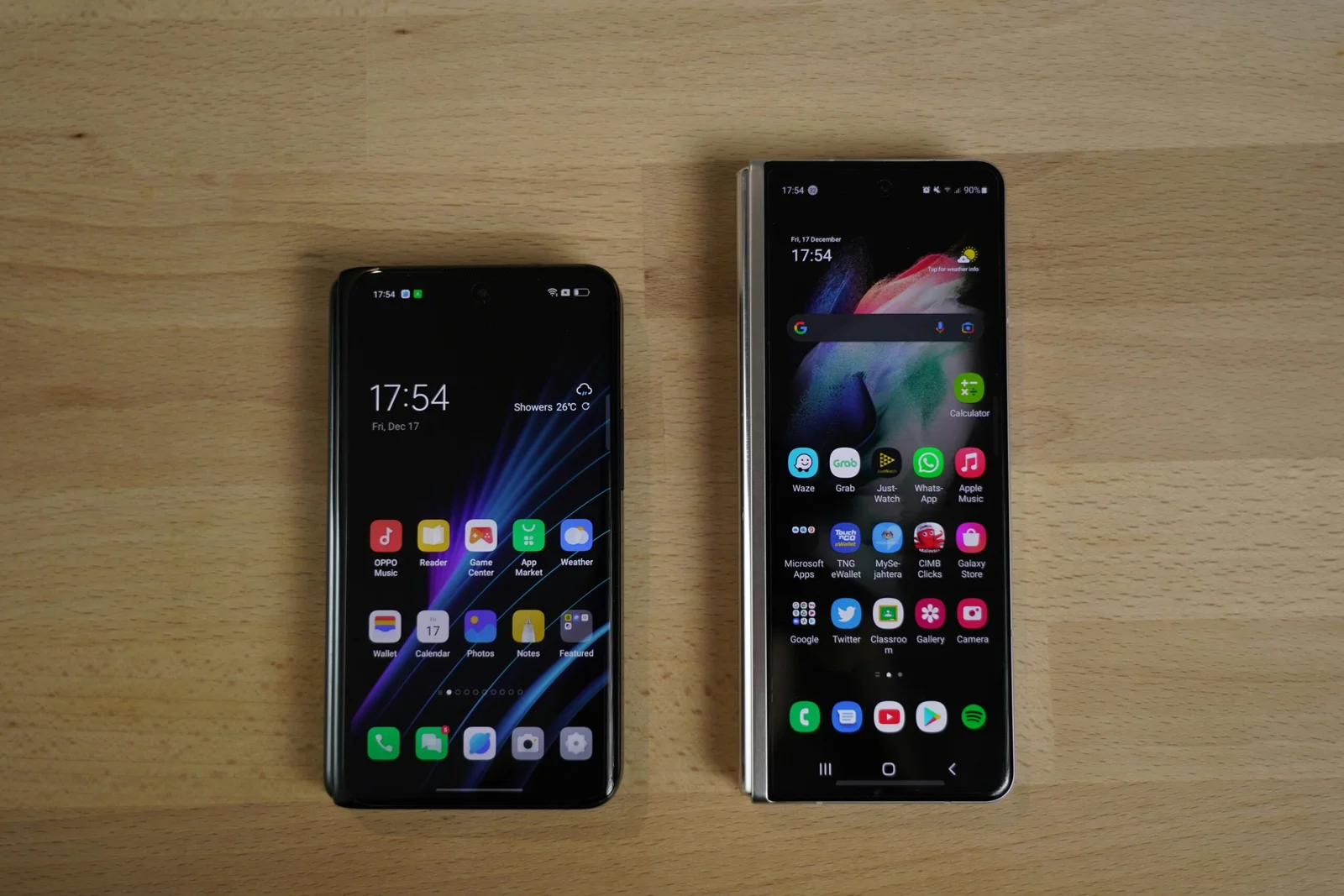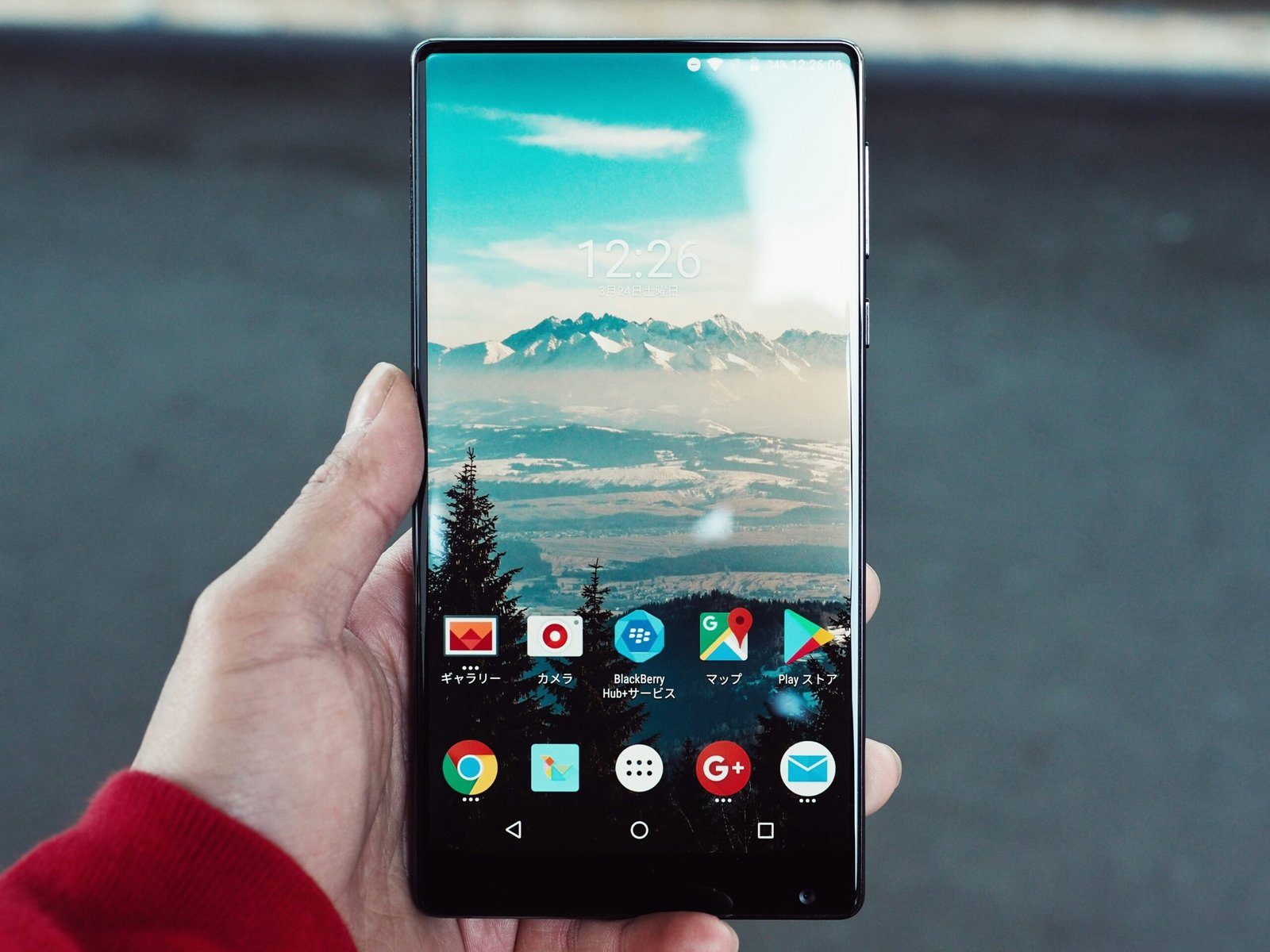
Introduction to Foldable Smartphones
Foldable smartphones represent a significant leap in the evolution of mobile technology, offering a blend of flexibility and innovation that has captured the interest of both consumers and tech enthusiasts. These devices feature screens that can bend, fold, or flip, providing users with a versatile interface that can transition between a standard smartphone and a larger tablet-like display.
The concept of foldable smartphones dates back to early explorations in flexible display technology. Initial research and prototypes in the 2000s laid the groundwork for what would eventually become a commercial reality. Key technological advancements, such as the development of OLED (Organic Light Emitting Diode) screens, have been pivotal. OLED technology allows for thinner, more flexible displays that can sustain the physical demands of bending and folding without compromising on visual quality or durability.
Samsung was a pioneer in this space, unveiling the first widely recognized foldable smartphone, the Galaxy Fold, in early 2019. This model set the stage for the market, featuring a 7.3-inch foldable display and a robust hinge mechanism that allowed the device to open and close seamlessly. Following closely, Huawei introduced the Mate X, showcasing their interpretation of foldable technology with an outward-folding design.
Other manufacturers, such as Motorola with their revived Razr series and more recent entries from Xiaomi and Oppo, have also contributed to the expanding landscape of foldable smartphones. Each new model pushes the boundaries of what is possible, incorporating improved materials, more sophisticated hinge designs, and enhanced software integration to optimize the user experience.
These technological advancements have not only made foldable smartphones a reality but have also set the stage for future innovations. As research continues and manufacturing processes evolve, the possibilities for what foldable smartphones can offer are virtually limitless, promising a dynamic shift in how we interact with our mobile devices.
Technological Innovations Behind Foldable Smartphones
Foldable smartphones represent a significant leap in mobile technology, driven by a series of groundbreaking innovations that allow these devices to offer flexibility without compromising functionality. At the heart of this transformation lies the flexible OLED (Organic Light Emitting Diode) display. Unlike traditional displays, flexible OLED screens can bend and fold while maintaining high resolution and vibrant color output. Engineers have developed these displays using materials such as polyimide, which is both flexible and durable, ensuring the screen can withstand repeated folding and unfolding.
One of the critical components that enable foldable smartphones is the hinge mechanism. Advanced hinge systems, often constructed from robust alloys and sophisticated engineering, allow the device to fold smoothly and securely. These hinges are meticulously designed to provide just the right amount of resistance, ensuring that the phone remains stable in both its folded and unfolded states. Experts in mechanical engineering emphasize the importance of precision in these hinges, as any misalignment could lead to screen damage or impaired functionality.
Durability is another crucial aspect, as foldable smartphones need to endure the rigors of daily use. Manufacturers are increasingly incorporating ultra-thin glass and other resilient materials that can bend without breaking. This innovation is essential in protecting the delicate OLED screens from scratches and impacts. Additionally, the development of advanced adhesives and protective layers further enhances the durability and longevity of these devices.
These technologies do not work in isolation. The seamless integration of flexible displays, hinge mechanisms, and durable materials is essential for providing a cohesive user experience. Engineers and industry experts highlight the collaborative efforts needed across multiple disciplines, including materials science, mechanical engineering, and electronics, to bring foldable smartphones to market. This synergy not only enables the creation of functional and reliable devices but also opens up new possibilities for future mobile technology advancements.
Market Trends and Consumer Adoption
Foldable smartphones have swiftly transitioned from a novel concept to a significant segment within the mobile phone industry. Market trends indicate a steady rise in sales, driven by a combination of technological advancements and evolving consumer preferences. According to a report by IDC, global shipments of foldable smartphones are projected to reach 50 million units by 2025, highlighting the growing consumer demand.
Demographically, early adopters of foldable smartphones tend to be tech enthusiasts and professionals seeking enhanced productivity features. The appeal of foldable devices is particularly strong among users aged 25-45, who are drawn to the innovative form factor that combines the portability of a smartphone with the expansive screen real estate of a tablet. This demographic is also characterized by a higher disposable income, making them more likely to invest in premium devices.
Geographically, the popularity of foldable smartphones is most pronounced in regions with high smartphone penetration and tech-savvy populations. Asia-Pacific, particularly South Korea and China, leads in market adoption, thanks to the presence of major manufacturers like Samsung and Huawei, and a consumer base that is highly receptive to new technology. North America and Europe are also seeing increased interest, driven by strong marketing campaigns and growing consumer awareness.
Several factors are driving consumer interest in foldable smartphones. The desire for larger screens without compromising on portability is a significant motivator. Foldable devices offer a unique solution, allowing users to enjoy immersive media consumption and multitasking capabilities on a single device. As noted by a recent Gartner report, “Consumers are increasingly seeking devices that enhance their digital experiences, and foldable smartphones are well-positioned to meet this demand.”
Furthermore, the continuous improvements in display technology, hinge mechanisms, and software optimization are making foldable smartphones more durable and user-friendly. These advancements are crucial in addressing early concerns about the longevity and usability of foldable devices, thereby encouraging more consumers to embrace this innovative technology.
Comparative Analysis of Leading Foldable Smartphones
Foldable smartphones represent a significant leap forward in mobile technology, offering unique form factors that enhance both functionality and portability. Among the leading models in the market today, the Samsung Galaxy Z Fold 4, Huawei Mate X2, and Motorola Razr 5G stand out due to their innovative designs and advanced features.
The Samsung Galaxy Z Fold 4 is often hailed as the frontrunner in this category. It features a 7.6-inch Dynamic AMOLED 2X main display, paired with a 6.2-inch Super AMOLED cover display. Powered by the Snapdragon 888 processor and offering up to 12GB of RAM, it promises exceptional performance. Key features include a versatile camera system with 12MP wide, ultra-wide, and telephoto lenses, and its seamless multitasking capabilities, which are enhanced by Samsung’s One UI software. User reviews praise its robust build quality and the fluidity of its hinge mechanism, though some criticize its high price point and the noticeable crease in the center of the main display.
Next, the Huawei Mate X2 offers a different approach with its outward-folding design. It boasts an 8-inch OLED display when unfolded and a 6.45-inch OLED display when folded. The Kirin 9000 chipset, coupled with 8GB of RAM, ensures smooth performance. Unique selling points include its Leica-engineered quad-camera setup, which offers exceptional photo and video quality, and the innovative Falcon Wing hinge mechanism that provides a nearly seamless folding experience. However, the absence of Google Mobile Services is a significant drawback for many users outside of China.
The Motorola Razr 5G, on the other hand, takes a nostalgic approach by modernizing the iconic flip phone design. It features a 6.2-inch P-OLED display, with a secondary 2.7-inch G-OLED quick view display for notifications and quick actions. The Snapdragon 765G processor, alongside 8GB of RAM, delivers decent performance, though it lags behind its competitors. Its compact size and retro appeal are highlighted as major advantages, but reviews often mention its limited battery life and the durability concerns associated with its folding mechanism.
Expert opinions underscore the growing sophistication and diversity within the foldable smartphone market. Each model offers a unique set of strengths, catering to different user preferences and use cases. While the Samsung Galaxy Z Fold 4 is lauded for its all-around performance and multitasking prowess, the Huawei Mate X2 stands out for its superior camera quality and innovative design. Meanwhile, the Motorola Razr 5G appeals to those seeking a blend of modern technology with a classic aesthetic. As foldable smartphones continue to evolve, they promise to redefine the future of mobile technology, offering consumers exciting new ways to interact with their devices.
Challenges and Limitations
Foldable smartphones, while emblematic of cutting-edge technology and innovation, face a myriad of challenges and limitations that impede their widespread adoption. One of the most prominent issues is durability. The very feature that defines these devices—the foldable screen—is also a point of vulnerability. The flexible display materials are more susceptible to wear and tear compared to traditional screens. Users have reported problems such as screen creasing, hinge malfunction, and even display failures after prolonged use. Manufacturers are diligently working to enhance the robustness of these devices by employing more resilient materials and advancing hinge technology.
Another significant obstacle is the high production cost associated with foldable smartphones. The intricate engineering required to create a device that can fold seamlessly without compromising functionality or aesthetics results in elevated manufacturing expenses. Consequently, these costs are transferred to consumers, making foldable smartphones a premium product. This high price point limits accessibility and may deter potential buyers. However, as production techniques advance and economies of scale come into play, it is anticipated that the costs will gradually decrease, making foldable smartphones more affordable over time.
Software compatibility is yet another challenge for foldable smartphones. The unique form factor necessitates specialized software that can adapt to multiple screen configurations. Ensuring a seamless user experience requires significant modifications to existing applications, which can be both time-consuming and costly for developers. Additionally, operating systems must be optimized to handle the dynamic nature of foldable screens. Leading tech companies are investing in R&D to create more adaptable and flexible software solutions, fostering a collaborative environment with app developers to streamline this transition.
In addressing these challenges, manufacturers are not only improving material science and engineering but also fostering innovation in software development. The horizon looks promising as these advancements continue to evolve, potentially transforming foldable smartphones from a niche market into a mainstream choice for consumers.
The Impact on the Smartphone Industry
The advent of foldable smartphones is significantly reshaping the landscape of the smartphone industry. As manufacturers vie for dominance in this burgeoning market, several crucial shifts are becoming evident. One of the most notable changes is in design philosophy. Traditional smartphone designs, which have largely remained static over the past decade, are giving way to more innovative, flexible formats. This shift is driving companies to rethink their approach, not just to aesthetics, but also to functionality and user experience.
In terms of competitive dynamics, the introduction of foldable smartphones is intensifying the rivalry among major players. Companies like Samsung, Huawei, and Motorola are at the forefront, each striving to outdo the others with more advanced technology and unique features. This competition is fostering a new era of innovation, compelling manufacturers to invest heavily in research and development. The objective is clear: to create a foldable smartphone that not only captures consumer interest but also sets new standards for the industry.
Industry analysts suggest that the push for innovation driven by foldable smartphones could lead to broader technological advancements. For instance, improvements in display technology, battery life, and materials science are likely to spill over into other types of devices. This domino effect could benefit a wide array of consumer electronics, enhancing their durability, functionality, and overall user experience.
Smartphone manufacturers are also adapting their business strategies in response to the rise of foldable smartphones. The need for specialized components and new manufacturing processes is prompting companies to form new partnerships and supply chain networks. These collaborations are essential for overcoming the technical challenges associated with foldable devices and for meeting consumer demand efficiently.
Overall, the emergence of foldable smartphones is not just a fleeting trend but a transformative force in the smartphone industry. By driving innovation, altering competitive dynamics, and prompting strategic shifts, foldable smartphones are poised to redefine what consumers expect from their mobile devices.
Future Potential and Predictions
The future potential of foldable smartphones appears promising, with industry experts and futurists anticipating significant advancements in technology, design, and applications. As manufacturers continue to refine and innovate, foldable smartphones are likely to become more mainstream, offering consumers an increasingly seamless experience. One of the most anticipated advancements is in display technology. Current foldable screens are already impressive, but future iterations are expected to be even more durable, flexible, and vibrant, thanks to developments in materials science and manufacturing processes.
Design improvements are also on the horizon. Future foldable smartphones might feature even slimmer profiles and lighter weights, making them more convenient and portable. Enhanced hinge mechanisms and more robust folding components will likely lead to increased longevity and reliability. Additionally, we can expect a broader range of form factors, such as rollable displays or devices that can fold multiple times, providing greater versatility and functionality.
On the application front, foldable smartphones have the potential to revolutionize the way we interact with our devices. Multi-tasking will become more efficient, with larger screens enabling users to run multiple apps simultaneously without compromising on usability. Augmented reality (AR) and virtual reality (VR) applications are set to benefit immensely from foldable displays, offering more immersive and expansive experiences. Moreover, advancements in artificial intelligence (AI) and 5G technology will further enhance the capabilities of foldable smartphones, making them smarter and faster.
Industry experts predict that within the next five to ten years, foldable smartphones could become a staple in the tech world, with prices becoming more competitive as production scales up. Companies like Samsung, Huawei, and Apple are at the forefront of this evolution, investing heavily in research and development to bring the next generation of foldable devices to market. Futurists also suggest that as foldable technology matures, it could pave the way for entirely new categories of devices, blurring the lines between smartphones, tablets, and even laptops.
Overall, the future of foldable smartphones is bright, with continuous innovations set to redefine the possibilities of mobile technology. As these devices evolve, they will not only enhance our daily lives but also inspire new ways to connect, create, and interact with the digital world.
Conclusion: The Long-Term Outlook for Foldable Smartphones
Foldable smartphones have undoubtedly made significant strides since their inception, showcasing remarkable advancements in technology and design. Throughout this blog post, we have explored various facets of these innovative devices, from their technological breakthroughs to market trends and consumer reception. The allure of larger, flexible screens combined with the portability of a smaller device has caught the attention of both tech enthusiasts and mainstream consumers alike.
However, the journey of foldable smartphones has not been without its challenges. Issues such as durability, high production costs, and the need for optimized software have posed significant hurdles. While manufacturers continue to address these concerns, it remains uncertain whether these obstacles can be entirely overcome in the near future. Furthermore, the premium price point of foldable smartphones may limit their accessibility to a broader audience, potentially relegating them to a niche market.
On the other hand, the potential for foldable smartphones is immense. The integration of cutting-edge materials and innovative engineering solutions promises continuous improvement in the durability and functionality of these devices. As production techniques evolve and economies of scale are achieved, the cost of manufacturing foldable smartphones is likely to decrease, making them more affordable and accessible to the general public. Additionally, the adaptability of foldable screens opens up new possibilities for multitasking, gaming, and media consumption, which could drive consumer demand.
In conclusion, while foldable smartphones face several challenges, their potential remains substantial. Whether they become a mainstream technology or remain a niche product will largely depend on continued technological advancements and market dynamics. As the industry progresses, it will be intriguing to observe how foldable smartphones evolve and shape the future of mobile technology.






